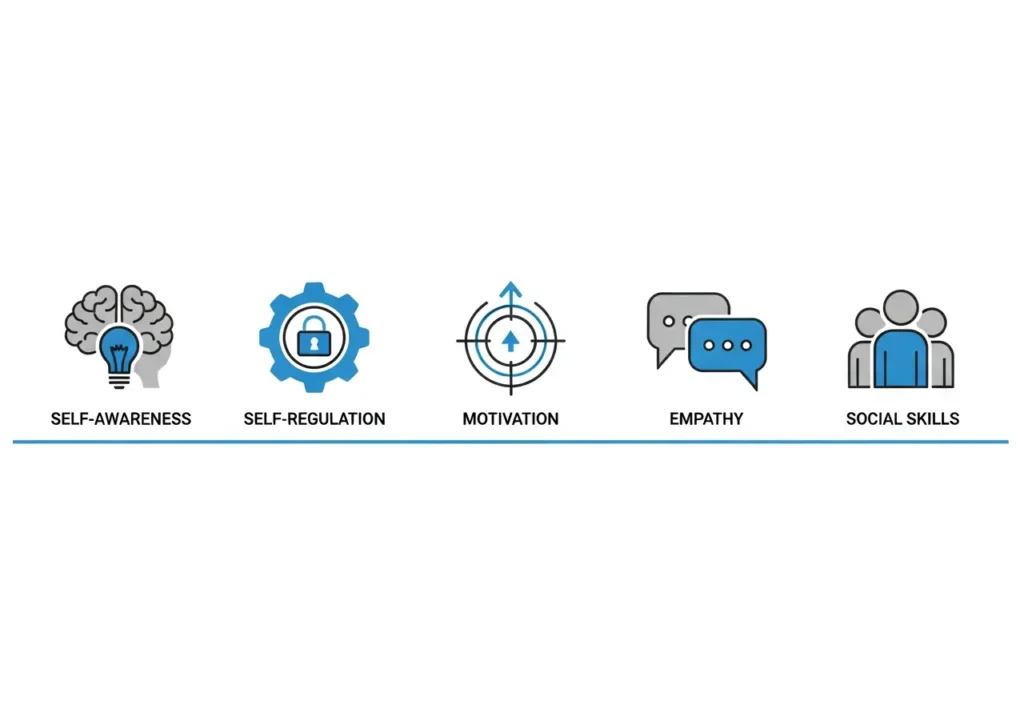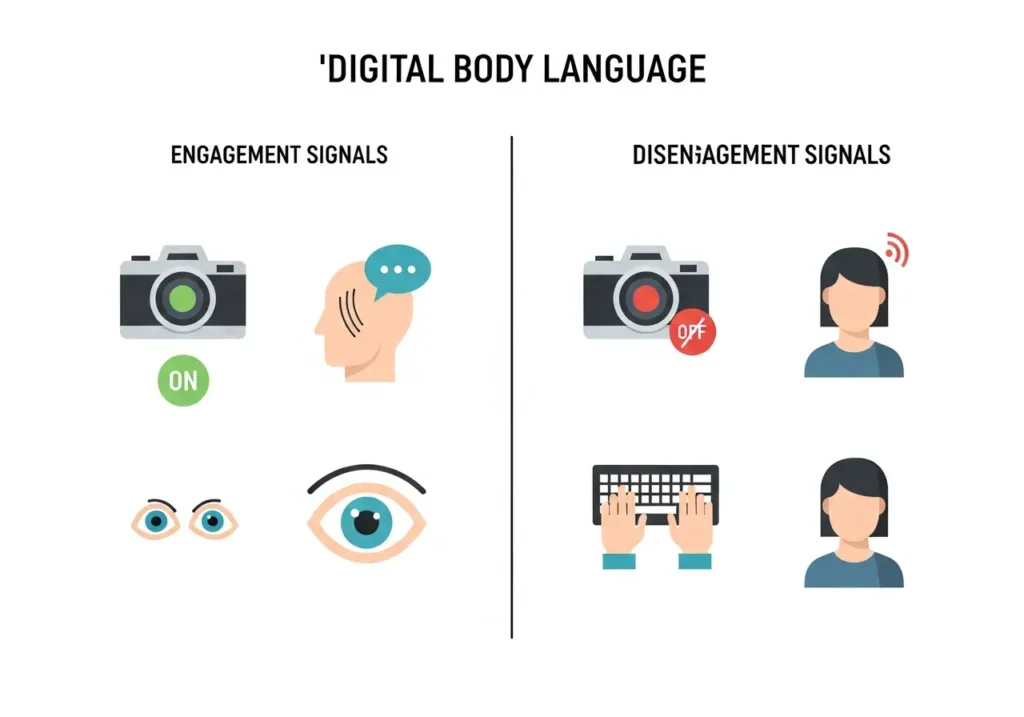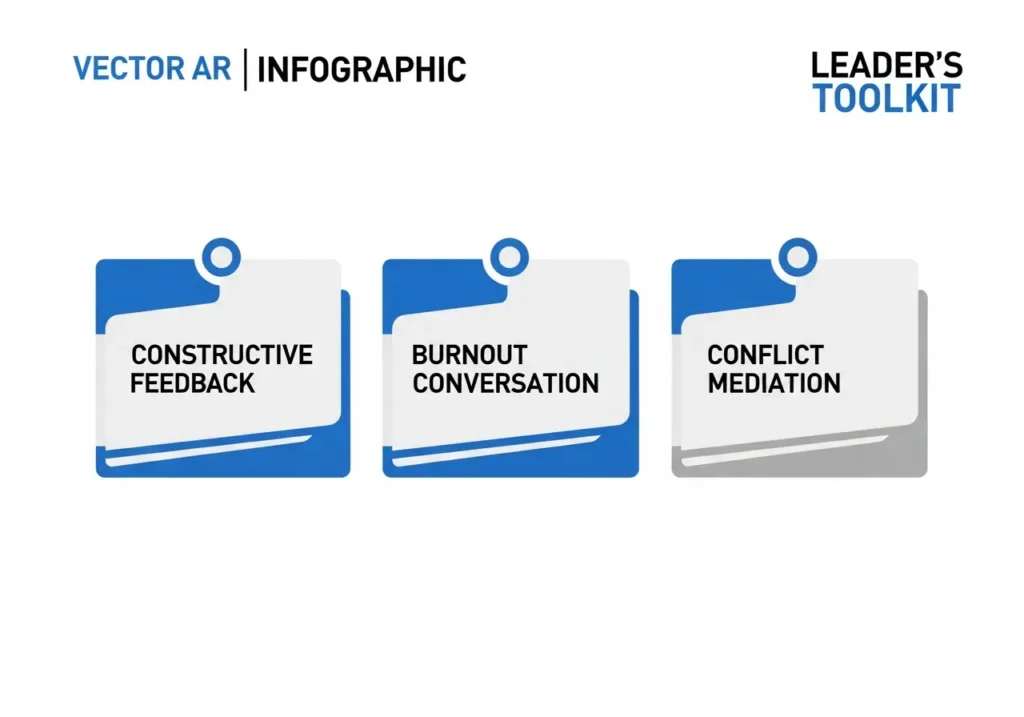Ever wonder why the smartest person in the room isn’t always the best leader?
The answer lies in a skillset that traditional business education often overlooks: Emotional Intelligence (EQ). For ambitious leaders, mastering EQ is no longer a soft skill—it’s the core operating system for driving engagement, innovation, and results.
This is not a theoretical overview. This is a field guide. We will dissect the frameworks, provide actionable scripts for high-stakes conversations, and equip you with the tools to lead effectively in the modern, hybrid world.
The Leadership Imperative: Why EQ Now Matters More Than IQ
As you ascend in your career, the rules of what makes you valuable change dramatically.
The “CEO Paradox”: How Technical Skills Become Less Important as You Rise
In the early stages of a career, your technical skills and IQ are primary drivers of success. You are valued for what you do.
As a leader, your value shifts to how you get work done through others. Your success becomes a function of your ability to understand, motivate, and guide people—all hallmarks of high Emotional Intelligence.
The Law of Emotional Contagion: As a Leader, You Are the Weather
Emotions are infectious, and a leader’s emotional state sets the tone for the entire team.
If you are stressed and reactive, you create a culture of anxiety. If you are calm and focused, you foster psychological safety and clarity. You don’t just manage a team; you manage an emotional environment.
The 5 Pillars of Emotionally Intelligent Leadership (Goleman’s Framework in Action)
Daniel Goleman’s framework is the gold standard. But defining the pillars isn’t enough. Here’s how to apply them. (For a full overview, see our Ultimate Guide to Emotional Intelligence).

1. Self-Awareness: The Foundation of Authentic Leadership
This is the ability to recognize and understand your moods, emotions, and drives, as well as their effect on others.
- Actionable Practice: Mapping Your Emotional Triggers: At the end of each day for one week, identify one situation that triggered a strong emotional response in you. What was the situation? What did you feel? What was the underlying cause? This practice reveals the patterns you need to manage.
2. Self-Regulation: The Space Between Trigger and Response
This is the ability to control or redirect disruptive impulses and moods. It’s not about suppressing emotion, but choosing your response.
3. Intrinsic Motivation: The Drive for Purpose, Not Just Profit
Emotionally intelligent leaders are driven by an internal passion for what they do, not just by external rewards like money or status. This purpose-driven energy is contagious and inspires teams.
4. Empathy: The Three Types Leaders Must Master
Empathy is the ability to understand the emotional makeup of other people.
- Cognitive Empathy: Understanding someone’s perspective.
- Emotional Empathy: Feeling what someone else feels.
- Compassionate Empathy: Being moved to help. Great leaders fluidly use all three.
5. Social Skills: Building Trust, Influence, and Psychological Safety
This is the culmination of the other pillars—proficiency in managing relationships and building networks to move people in the desired direction.
The Cost of Low EQ: Leadership Failure Case Studies
Nothing illustrates the importance of EQ like its absence.
Common Red Flags of Low-EQ Leadership
- Reacting defensively to feedback without listening.
- Avoiding difficult but necessary conversations.
- Micromanaging the team, especially under pressure.
- Taking credit for wins but blaming the team for losses.
- Failing to recognize signs of burnout in their people.
The “Know-It-All” vs. “Learn-It-All” Culture: A Tale of Two CEOs
Under its previous leadership, Microsoft had a “know-it-all” culture, where internal competition stifled innovation. When Satya Nadella took over, he championed a “learn-it-all” culture rooted in empathy—a direct application of EQ. The result was a historic corporate turnaround, proving that a leader’s EQ can reshape an entire organization.
The Modern Leader’s Challenge: Applying EQ in a Hybrid World
Leading a team you rarely see in person requires a deliberate and upgraded EQ toolkit.
Building Trust and Psychological Safety from a Distance
In a remote setting, trust is built through intentional, consistent, and reliable communication. This means structured check-ins, clear expectations, and celebrating wins publicly to foster connection.
“Digital Body Language”: How to Read Engagement on a Video Call
You lose physical cues, so you must learn to read digital ones.

- Engagement signals: Camera on, nodding, asking questions in chat, focused eyes.
- Disengagement signals: Camera off, constant typing, looking at other screens, silence.
- Your role: Explicitly ask for feedback. “I’ve been talking for a while. What are your thoughts on this?”
Asynchronous Empathy: Crafting Clear and Compassionate Written Communication
Your emails and Slack messages are a primary tool for conveying tone. Before sending, re-read your message and ask: “How could this be misinterpreted by someone having a stressful day?” Add clarity, state positive intent, and assume good faith.
The Senior Leader’s Toolkit: How to Measure and Develop Your EQ
At ActionableSelf, we believe theory is useless without a toolkit. This is the system we’ve used to coach hundreds of leaders to turn self-awareness into tangible results. Here’s how you can start today.
A DIY Guide to the 360-Degree Feedback Process
360-degree feedback is the single best tool for uncovering your leadership blind spots.
- Select Raters: Choose a mix of direct reports, peers, and your own manager.
- Ask Simple, Powerful Questions: Use an anonymous survey and ask questions like: “What is one thing I should start doing?”, “What is one thing I should stop doing?”, and “What is one thing I should continue doing?”
- Receive with Openness, Not Defensiveness: Your only job when receiving feedback is to listen and say “thank you.” Do not justify or explain.
- Identify Themes and Act: Look for recurring patterns. Choose ONE theme to work on for the next quarter and communicate your commitment to your team.
Communication Scripts: What to Say in High-Stakes Conversations
Here is the exact language to use in difficult moments.

The Constructive Feedback Script:
“I’ve noticed that in our last few team meetings [Observed Behavior], the project updates have been very high-level. The impact is that the rest of the team isn’t clear on the specific progress and roadblocks [Impact]. Can you walk me through your perspective on this? [Invitation to Dialogue]“
The Burnout Conversation Script:
“I wanted to check in. I’ve noticed you seem stretched thin lately, and you’ve been online very late [Observation]. I’m concerned about your workload. What’s on your plate right now, and how can I best support you? [Offer of Support]“
The Conflict Mediation Script:
“Let’s pause. My goal here is to understand both perspectives fully, not to assign blame. John, can you start by explaining your view of the situation and what you need? Jane, I’ll ask you to just listen, and then you’ll have your turn to do the same.”
Assess Your Starting Point: Take the Free EQ Test
Before you can improve, you must measure. Our free, science-backed Emotional Intelligence Test will give you a clear baseline of your strengths and growth areas in under 10 minutes.
Conclusion: Leadership is an Emotional Practice
Effective leadership is not a series of transactions; it is the practice of managing human emotion—your own and that of your team—in the service of a common goal.
Your First Action: Choose One Competency to Practice This Week
Don’t try to boil the ocean. Choose one skill from this guide—like mapping your triggers or using a feedback script—and focus solely on that for the next seven days.
A Reminder: EQ is a Skill, Not a Trait
You will not be perfect. There will be moments you react poorly. The goal of an emotionally intelligent leader is not perfection, but continuous learning and growth.


